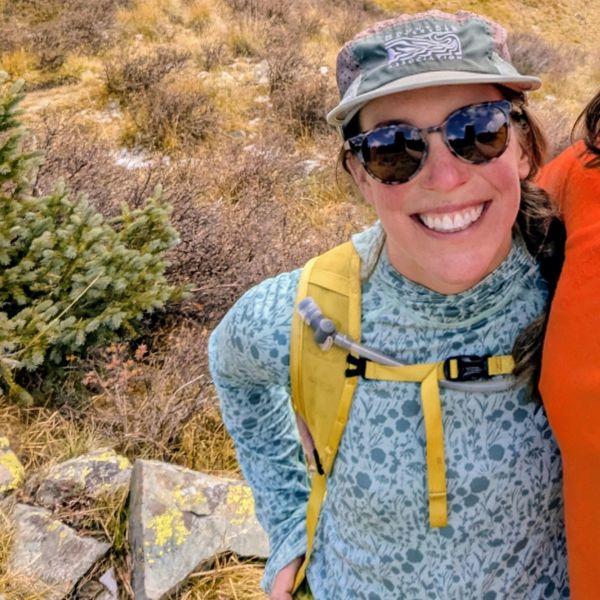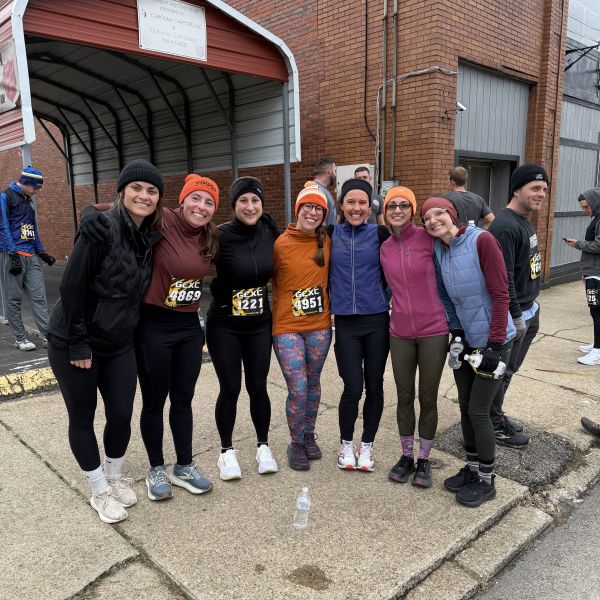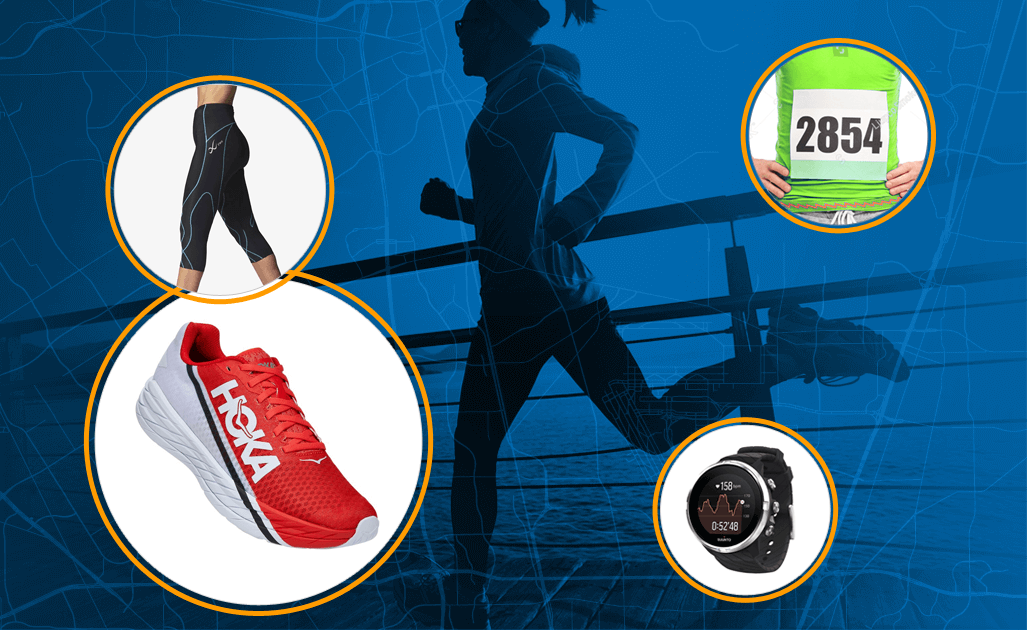Have you ever thought about the use and benefit of poles in trail running? To date, I’ve been using the Leki Micro Trail Pro running poles for one and a half years. Here, I share my personal story with them.
In the summer of 2019, I ran up a 0.75-mile hill on a dirt road while pushing my two-year-old son in the Bob off-road stroller, and then back down. Then I did it again. A day later, the top of my left knee began to twinge each time I ran up a hill, even without my son in tow. For several days the pain continued – maybe I pushed it a little too much with the stroller hill repeats. But I wasn’t willing to let a little niggle in the knee stop me from trail running, where running uphill is unavoidable.
So, I figured out a way to aid the healing. If I could use my arms to thrust myself uphill, to power myself against gravity, to take pressure off the legs, perhaps the knee would be happier.
For several days, I researched the best trail running poles on the market and decided upon the lightweight, carbon Leki Micro Trail Pro.
Because I could not justify making the purchase for solely my knee, I had at that time begun playing with the idea of running longer ultras, something more than 50K. Maybe I could use them for that, too? If I buy the poles, I told myself, I’ll toy with the idea some more. There, two reasons to commit to the purchase.
I wanted to treat this minor knee thing well, to baby it, because I’ve been down the injury road, and I was NOT willing to go there again. Thus, even on my regular afternoon go-to trail runs of five to seven miles, which gain about 700-1,100 feet of elevation, I took the poles. The poles become my second set of legs. Like an animal, my arms were now in the game, and it felt AWESOME, a full-body, charged experience, exploding up and over rocks and terrain. The knee, indeed, was happy, that sharp ache subsided shortly after, and I was able to run pole-free, pain-free.
At merely 6.8 ounces, they fit in the front pockets of my running pack where the small hydration flasks sit. I don’t bother with the trekking pole features on the pack, because the poles fold in three and fit oh-so-neatly where they are easy to whip out at a moment’s notice. And that’s how I use them – I whip them out, dig into the ground to propel myself upward, and savor the strength put forth by the shoulders, arms and back. The detachable, comfortable, mesh hand straps allow for a firm grip and secure attachment. They are quick and easy to remove from the poles themselves with the press of a quick release feature. When the leg-burning sections end, I take my hands out of the straps, stow the poles away and use my rested leg-muscles to keep moving. This means that I may only use them for five to 15 minutes, but that time assists in keeping the momentum of the run, rather than slowly succumbing to the gravity of hills, which can sometimes feel as if they are pressing us down, making our heads hang and our hands go to our hips. With that said, the poles encourage good, upright posture in climbing and power hiking by keeping the head up, the body in one plane, minimizing breaking or hunching over at the waist or mid-back.
This winter, the local trails were blanketed in snow from December to the end of February, with a base of 12-18 inches. What was I to do?! Run on the road? No way – the Lekis were calling! Even on the flatter, easier single track, I took the poles, which kept me on two legs on the icy sections. To make it through particularly deep sections, I aggressively plunged the poles into the snow, dug my toes into the pretty powder and pushed myself forward. When I attempted these snow runs without the assistance of the poles, I was sliding backward down hills and ultimately surrendered to hiking, slogging through snow, something quite frustrating when I am in the mood to run. Likewise, when descending, bracing with the poles kept me from careening down slick embankments into trees and creeks and rivers, and, again, kept me standing firmly on two feet. So, in contrast to how I use them on clear, dry trails (getting them out for very short bursts of time), I used them for 90-100 percent of each run upon deep snow and ice this past season. Another thing to note about winter pole use is that, even though the hand straps do fit atop gloves and mittens, I only use them with the thinnest ones, because the bulkiness under straps is too much.
When wearing a large pack, I am often unsure of what to do with my arms. They do not swing naturally like they do when I run. Yet, with poles, my arms feel as if they have a purpose, they know what to do, where to go. A hike becomes a power hike, one step closer to a run! An added bonus? The pack feels lighter with the support of the poles. While I run much, much more than I backpack, this is one of my favorite uses of the poles.
Needless to say, once a month, I am DEAD tired. My legs feel heavy, my hips feel weird, I want to lie on the couch and eat dark chocolate. On one of these particularly lethargic days last summer, I had a steep 19-miler scheduled. Boy, was I dreading it! Then I remembered the poles – the trusty, supportive, there-for-me, beautiful poles! I threw them in the pack (along with the chocolate), decided I would just hike, because that would be better than not going at all, and off I went. Of course, I ran, albeit more slowly than usual, but I got it done and felt all the better for it. We all have sluggish days, men and women alike, and poles sure do pull their weight in such circumstances.
Now, my fellow runner, our reader, I want to share some background information, some relative specifics, in case you’re considering purchasing poles.
For one, I have never tried any other poles. I heard Leki was the best, believed the hype, and in my opinion, they hold up to that reputation.
Second, I have never used them in a race or group run, only solo and in unsupported Fastest Known Time records where trails were snow-covered or littered by 100s of downed trees (in this case, the poles became mini pole vaults).
Finally, I run trails almost exclusively, plus an occasional dirt road, and I run them year-round, about five times a week. I do not use a treadmill, and I run on the road maybe six times a year. Ohiopyle State Park is my home-base, and if you’re familiar with those trails, they are rocky and technical and average 100-200 feet of elevation per mile, and as much descent. For instance, on a recent seven-miler on the Laurel Highlands Hiking Trail, the elevation gain was 1,549 feet. Certainly, my local routes and terrain do not compare to the Rockies or Alps, but I am happy to have poles as part of my running and backpacking arsenal.
Everyone’s situations are unique and different. What I am saying is, think about your personal situation, how much the poles will benefit you, and go from there. While I do not use them often (once a month, sometimes less), they are the bee’s knees for certain specific situations or when the mood arises.
Or, forget all that, get them, and they may surprise you and open up doors like they did for me. They may even become a catalyst to a dream. You may think, “Oh, hey, BECAUSE I own poles, I should go on a multi-day mountain running trip.” As you can see, I bought them for one reason, and they have become much more than a solution to a knee problem. And I’m still pondering the idea of running longer than a 50K – I’m sure the poles will support me in that aspiration, and I’ll be eager to share the story with you.
Until then, happy running!

Marci McGuinness Great article on the poles and the trail running all season lifestyle!
Rob Myers Fantastic Brynn! I really enjoyed your Rundown.
Brynn Cunningham Thank you, Rob! Glad you enjoyed it :)
Login to your account to leave a comment.





We Want to Give it to You!
